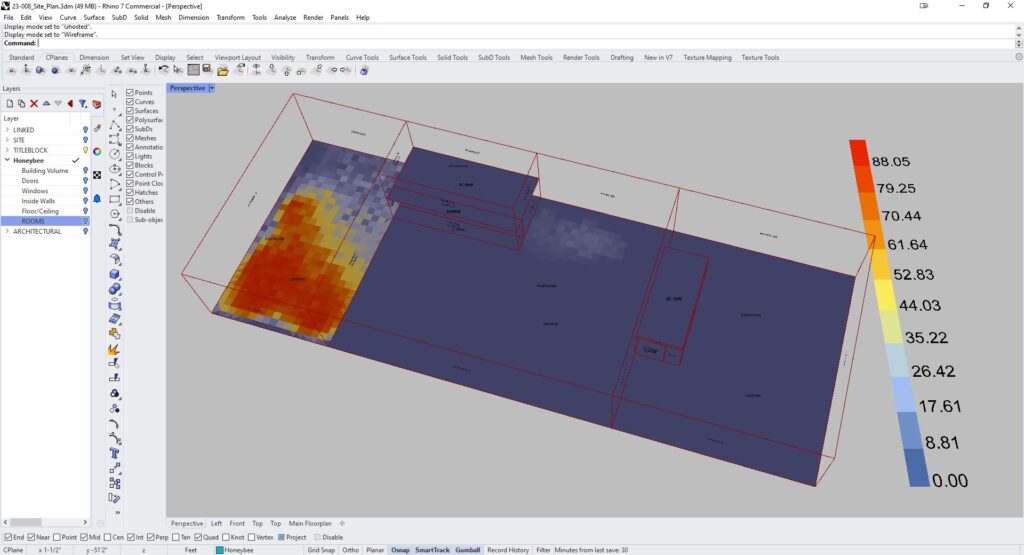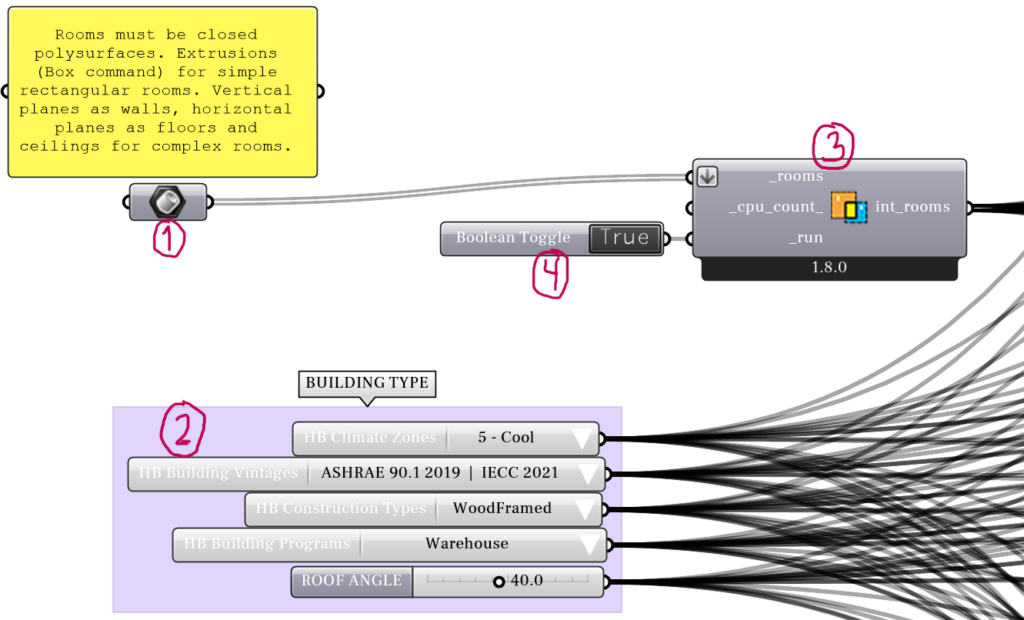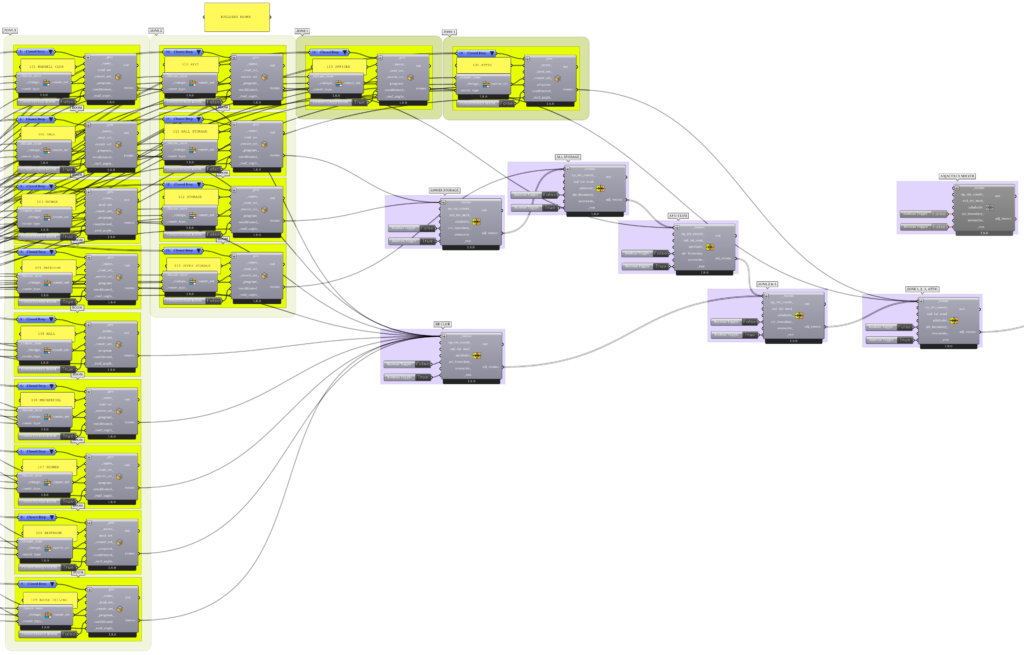There is a very powerful tool for Grasshopper within Rhino 3D. The Ladybug Tools collection includes many add-ons that allow for energy calculations, lighting calculations, air flow calculations, and much more. Building detailed models for energy and light simulations has never been simpler using Rhino’s speedy modeling tools.
I find the visual programming workflow that Grasshopper provides to be very intuitive in developing a model. Having the ability to simply export the model to .gbxml, we can verify our results in other HVAC load calculators.

For this study I am using the model of a gym in Davenport Iowa.

The building was built as a warehouse, with wood framed construction, and a mix of conditioned and unconditioned zones. The study is to determine whether the existing HVAC equipment is adequate for the existing space, and what might need to be done to improve comfortability.

In terms of models, this one is pretty interesting. The mix of conditioned and unconditioned spaces as well as the mix of single story (full height) and two story (half height) rooms makes the construction unique.

I also think there are some quite simple things to fix that would make the space more efficient. For one, the only windows in either warehouse space are facing north. The sun never gets a good angle on them, as shown in my preliminary light simulations.

Because of this the garage doors tend to be open, for light and airflow. This solution is usually adequate. If the space were ever to be conditioned, it may be ideal to replace one or more of the garage doors with clear garage doors. This also could cut down on the intense glare late in the day on the east wall of the building. I intend to adjust the materials of the doors in my Honeybee model to test the effect of clear doors.

The northern windows are up high. Changing one window to a louver for ventilation may help keep hot air out in the heat of summer. With glass garage doors, they can be kept shut, or only up a foot or two to allow cool air in from below.
These simulations were generated through my Grasshopper definition. It can be seen in full below:

Continue reading to read my explanation of how it works. I often refered to the Philipp Galvan Design YouTube channel for guidance in making these simulations.
I start by creating a Honeybee Model. First we define our rooms. Each room is created using closed polysurfaces(Solids).

- This is the icon for a brep. We use icons like this one to bring geometry from Rhino into our Grasshopper definition.
- The building type can be set next. There is some easy to use dropdown menus for simple things. HB Climate Zones are the ASHRAE climate zones. I may have to move the “HB Building Programs” selector to each individual room block, to allow different room use cases. I selected Warehouse for now to approximate a general commercial use for the building. As I look at this block, I should move the construction set by climate component back, and the Building Programs up to each room block. Also add relays.
- This first unique component is called “HB Intersect Solids”. Because we are doing a more complicated model with every room modeled there are some locations where the
- This idea of requiring a boolean toggle is common through this code. Many of the Honeybee components take significant time when they run. Having a quick way to turn them off allows you to edit specific parts of the code at once.

Leave a Reply